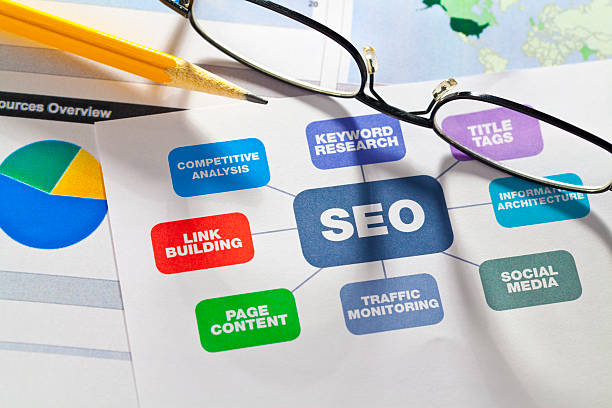You’re out with friends and the bill comes. “I got this,” you say, whipping out a credit card. We take for granted how easy it is to pay these days, but it wasn’t always like this. Rewind a few centuries and people relied on bartering, exchanging goods and services instead of money. It might surprise you how much commerce has shaped language itself. From transactions to contracts to advertising, business communication has come a long way. Join us on a journey through the fascinating evolution of the language of commerce, from primitive barter systems to complex financial instruments. So, you’ll gain fresh appreciation for how far we’ve come and a glimpse into where business communication could be headed next.
The Evolution of Business Communication
Long ago, the most common way businesses communicated was through physical letters sent by post. Additionally, the Rise of the Telegraph In the mid-1800s, the telegraph revolutionized communication. Also, businesses could instantly send messages across vast distances. So, the telegraph enabled faster information exchange and new business opportunities.
The Telephone: Voice-to-Voice Connection
The telephone further accelerated business dealings in the early 1900s. Additionally, executives could now speak directly, facilitating quicker decisions and problem-solving. Also, the telephone transformed business practices and allowed for new types of relationships and partnerships between companies.
The Digital Age: Email and Beyond
With the rise of digital networks in the late 1900s, email became the new telephone. Additionally, email enabled even faster communication and allowed for written records and documentation. Also, video calling and conferencing grew in the 2000s, simulating in-person meetings.
Today, numerous digital tools keep businesses constantly connected across the globe. Additionally, communication has become more informal, with short emails and instant messages the norm. Moreover, emojis and GIFs add color to digital conversations. So, business relationships are now built and maintained through always-on tools like social media.
While business communication has evolved in exciting ways, the core goals remain: forge connections, foster understanding, share knowledge, and drive commerce. As technology progresses, the language of business advances to keep pace, but some things never change.
Key Developments in the Language of Commerce

The rise of business jargon
As trade expanded in the 19th century, a specialized business vocabulary emerged. Additionally, executives and merchants developed industry-specific jargon and abbreviations to communicate efficiently. Terms like ‘PO’ for purchase order and ‘ETA’ for estimated time of arrival became commonplace. This new business lingo helped traders conduct deals quickly but often confused outsiders.
The spread of business English
In the early 20th century, English established itself as the dominant language of global business. Furthermore, British and American traders had extensive international networks, and English was the native tongue of many colonial empires. So, key business terms like ‘marketing’, ‘management’, and ‘branding’ entered the English lexicon and spread around the world. Also, proficiency in business English became essential for success in commerce.
The rise of corporate speak
In the mid-20th century, large corporations developed their own specialized vocabularies. Additionally, executives coined terms like ‘synergy’, ‘vertical integration’ and ‘core competencies’ to describe their business strategies. Also, this new ‘corporate speak’ was often long-winded, full of buzzwords and designed to impress shareholders. Though derided by critics, corporate speak shaped how executives thought and talked about business for decades.
The influence of technology
New technologies have introduced terms like ‘e-commerce’, ‘online marketing’ and ‘blockchain’ into the business lexicon. As companies adopt new tech, workers must learn another new vocabulary. But technology has also democratized business communication. So, platforms like e-mail, social media and workplace chat apps have made communication faster and less formal. Emoticons and emoji, once shunned in business, are now common, reflecting the changing norms of professional communication in the digital age.
Modern Trends and Innovations in the Language of Commerce

Changing technology
Technology has massively impacted business communication. Emails have replaced memos and letters. Additionally, video calls have made face-to-face meetings across cities and countries possible. Also, social media platforms have introduced new ways for companies to connect with customers and promote their brand.
Rise of digital marketing
The Internet has enabled new forms of digital marketing like search engine optimization, influencer marketing, and social media marketing. Moreover, companies now focus on driving web traffic, gaining backlinks, optimizing content for search, and building an online presence. Spending on digital marketing has skyrocketed while traditional advertising budgets have declined.
Focus on the customer experience
Modern businesses recognize the importance of customer experience. Furthermore, they aim to build personal connections and loyalty through quality service, products, and interactions. Also, customer service reps are trained to be friendly, helpful, and personable. Additionally, marketing emphasizes brand stories and a company’s mission or values. So, surveys and reviews give customers a voice to shape business practices.
Data-driven decisions
Big data and analytics tools have given companies deep insights into customer behavior, operational efficiency, and market trends. Executives can make data-driven decisions based on hard evidence rather than gut instinct alone. Additionally, they can precisely target audiences, personalize messaging, and optimize the customer journey based on collected data and metrics.
Agile work environments
New management philosophies emphasize collaboration, adaptability, and iterative progress. Additionally, open floor plans, cross-functional teams, and flexible scheduling aim to boost creativity and innovation. Also, regular feedback, check-ins, and retrospectives enable companies to quickly change directions based on lessons learned and new priorities. So, an agile, growth mindset has replaced strict hierarchies and rigid planning.
Informal and conversational tone
Business communication has adopted a more informal and conversational tone. Moreover, stuffiness and pretense have given way to authenticity and transparency. Plain language and a friendly, engaging style now dominate where jargon and formality once ruled. This shift aims to build trust, relatability, and loyalty with both internal and external stakeholders.
Conclusion: Language of Commerce
So there you have it – the evolution of business communication has come a long way since the days of snail mail and cold calls. Furthermore, with new technologies and cultural shifts, the language of commerce continues to adapt in exciting ways. While formal language still has its place in many contexts, a more conversational and relatable voice resonates with modern audiences. So, the key is to know your audience and craft your message thoughtfully.
At its heart, communication is about connecting with people. Also, approach it with empathy and authenticity, and you’ll be speaking their language. Whether it’s social media, video chats, or even a well-timed emoji, today’s tools provide more ways than ever to build those valuable relationships. Lastly, the language of business is ultimately defined by its purpose – bringing people together to accomplish something meaningful. So, keep that human connection at the center, and the rest will follow the language of commerce.








[…] a Sense of Urgency: Use persuasive language to create a sense of urgency and encourage immediate action. Limited-time offers exclusive bonuses, […]